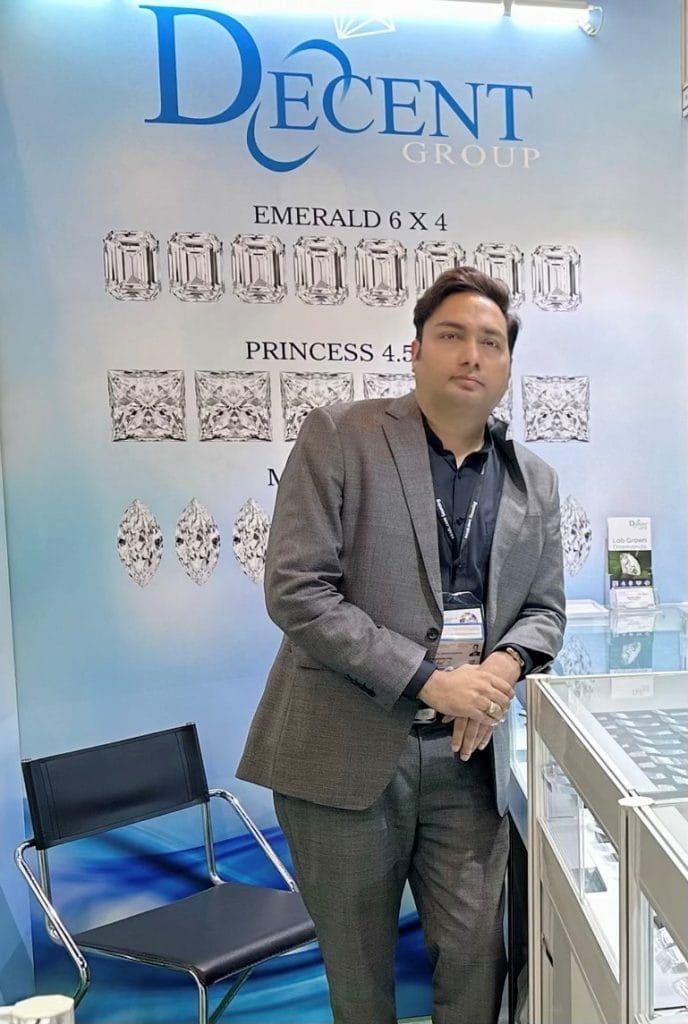A different facet of the gems industry.
By Aiden Jewelle Gonzales
Now that wedding season is winding down (sort of), engagement season is on the rise, so the whole cycle can start all over again. If, like me, you’re the designated single friend who knows all their soon-to-be-engaged bffs’ ring specifications, you probably have the 4Cs engraved on your mind, despite not attending a single GIA course or knowing why diamonds are the literal rock-stars of the gems industry.
We’ve heard the storied history: first discovered and mined in India, diamonds became a treasured possession because of their supposed rarity, but their status as the gem of love (or at least engagement) can only be traced back to De Beers’ infamous campaign in 1947. However, while ‘diamonds are forever,’ so is their legacy and the hole they may leave in your pocket, and many of us are becoming increasingly concerned with both ethical sourcing and costs.
A solution that is gaining traction, despite the stigma still attached to them in traditional gems and jewellery circles, is lab-grown or synthetic diamonds. We’ve reached out to community members in the know who give us the diamond-hard truths about what they are, the differences between them and natural diamonds, and why they’ve become a sparkling new trend.
FUN FACTS
• Lab-grown and natural diamonds have exactly the same chemical and physical properties and are indistinguishable to the naked eye
• Lab-grown diamonds are usually made using two methods:
– High-Pressure, High-Temperature (HPHT): using presses that produce pressure of around 5GPa at 1,500°C
– Chemical Vapor Deposition (CVD): using carbon plasma over a substrate so carbon atoms can form
• The first reproducible lab-grown diamond was in 1953, in the USSR
• Lab-grown diamonds can now be produced in more colours and higher quality than ever before
NAVEEN BATWARA
CEO, Decent Group
In your experience, can a professional actually tell the difference between natural and lab- grown diamonds if they checked?
Professional gemologists and diamond experts can typically distinguish between lab-grown diamonds and natural diamonds by examining them under magnification and using specialised equipment such as a spectroscope or a diamond tester. However, as lab-grown diamonds become more prevalent in the market and the technology for creating them advances, it may become more difficult to tell the difference without specialised equipment.
Why did you choose to specialise in lab-grown diamonds instead of just going the traditional route with natural diamonds?
Decent Group has specialised in lab-created stones for the last 30 years, so it was easy and necessary for us to add lab diamonds to our product line. Secondly, lab-grown diamonds are becoming increasingly popular, and they are often more affordable than natura diamonds, making them accessible to a broader range of consumers. They are also generally considered more environmentally friendly and sustainable than natural diamonds.
Tell us a little about your company, what you specialise in, and your USPs.
The foundation of the Decent Group was laid more than thirty years ago in 1992, to conduct business in all kinds of lab-created synthetic stones. We employ more than 250 workers to manufacture lab-grown diamonds, and all our products pass through a highly-qualified Quality Control (QC) department, which is committed to maintaining only the highest standards.
From procurement to manufacturing, Decent Group is involved in the entire industry chain with sales offices spread across major Asian hubs like Thailand, Hong Kong, India, and China. Our products are ethically sourced, meaning we prioritise fair labour practices and conflict-free diamonds so that our diamonds don’t contribute to human rights abuses or violence; and affordable despite their high-quality standard. We also specialise in cutting lab diamonds, from one to 10 carats, into bespoke shapes.
What are some of the benefits of lab-grown diamonds? There are several, including:
1. Cost: lab-grown diamonds can be up to 70 to 80 percent cheaper than natural diamonds.
2. Sustainability: lab-grown diamonds do not require mining and have a smaller carbon footprint, and they also have a more transparent supply chain, meaning it is easier to trace their origin and ensure that they have been ethically produced.
3. Customisation: because lab-grown diamonds can be created in a controlled environment, they can be customised to meet specific requirements, such as shape, colour, and clarity. This can be particularly useful for consumers who are looking for a unique and personalised piece of jewellery.
How are lab-grown diamonds certified and is the process different from natural diamonds?
Lab-grown diamonds are certified using the same criteria and process as natural diamonds, including the 4Cs: carat, weight, cut, colour, and clarity. The most widely- recognised diamond certification organisations, IGI and GIA, both evaluate lab-grown diamonds using the same standards and grading systems that they use for natural diamonds.
Why do you believe lab-grown diamonds have not yet reached the popularity of natural diamonds, especially in communities like the Thai-Indian community, and what are some misconceptions that you’d like to address?
Firstly, lack of awareness: many consumers may not be aware of the availability and benefits of lab-grown diamonds, as they are a relatively-new and emerging product in the diamond industry. This lack of awareness can lead to misconceptions and misunderstandings about them.
Some of these misunderstandings include:
- They are not real diamonds: lab-grown diamonds are composed of the same material as natural diamonds and have the same physical and chemical properties. They are chemically and optically identical to natural diamonds.
- They are of lower quality: lab-grown diamonds can be of similar or even higher quality than natural diamonds and are graded using the same criteria and standards.
- They are not as valuable: The value of a diamond is determined by its quality, rarity, and demand, not by whether it is natural or lab-grown.However, these misconceptions can be addressed with education and information, and with increasing product availability, I believe they can be more acceptable and popular even within the Thai-Indian community.
SUKHJEEVAN ‘EVAN’ NARULA
Managing Director, RIVA Moissanite and RIVA Lab Grown (coming soon)
In your professional opinion, are there real differences between lab-grown diamonds and natural diamonds?
To the naked eye there is no real difference; it’s all about perception. However, the easiest way to spot the difference is that natural diamonds have tiny amounts of hydrogen while lab grown diamonds don’t have any hydrogen.
You’re setting up RIVA Lab Grown shortly. Can you tell us a little about that and why you’ve chosen to go for diamond alternatives and lab-grown diamonds?
I believe lab-grown gems have a special place in jewellery. They are most definitely a more economical choice and eco-friendly. Not only do they promote sustainability, but I believe they also add to the artisanal culture of jewellery, from creating the gemstone to the final piece. Science and beauty are merged into one in a lab-grown diamond, which is why I find them much more interesting than natural diamonds, and why I chose to specialise in them.
Why do you think people prefer natural diamonds instead of alternatives?
You might not know this, but many in the community are already wearing lab-grown diamonds or other gems (such as rubies, sapphires and emeralds) – they’re just not telling you! For those who aren’t, they may not be aware of the alternatives.The biggest misconception with lab grown diamonds is that people think they’re ‘fake.’ Half the things accepted in the modern world are manufactured in labs, such as synthesised meats, vegetables, and test tube babies. I think the root cause of the stigma is just ignorance, and this can be addressed as more information becomesavailable.








